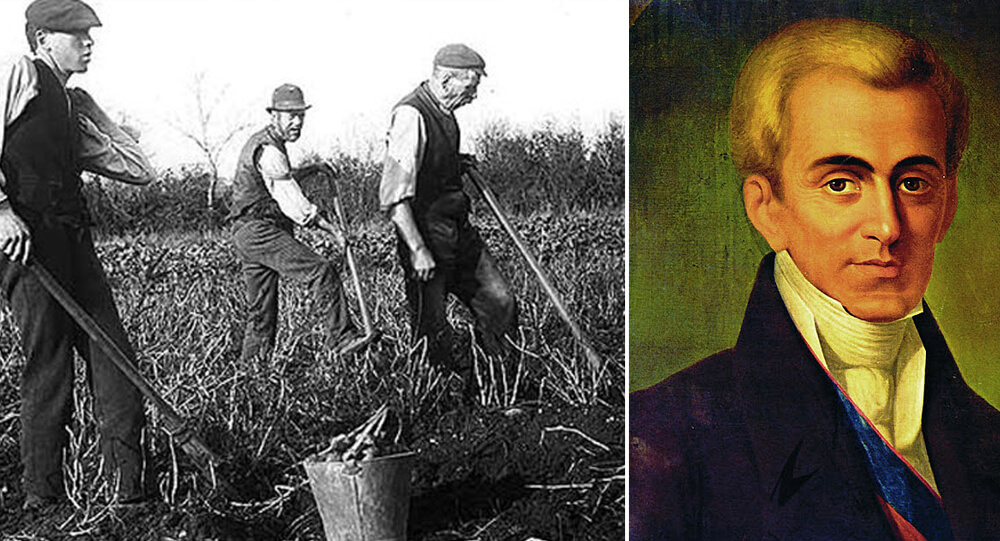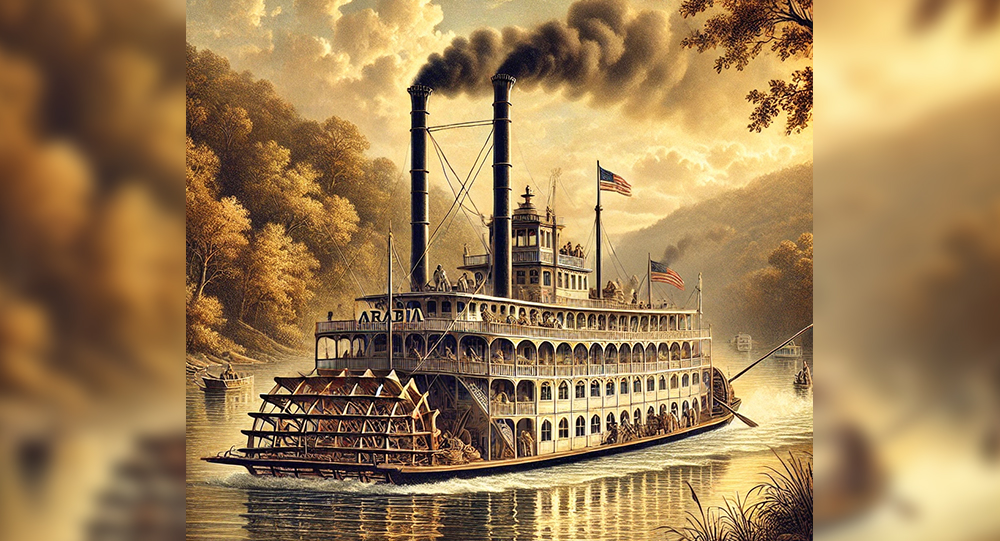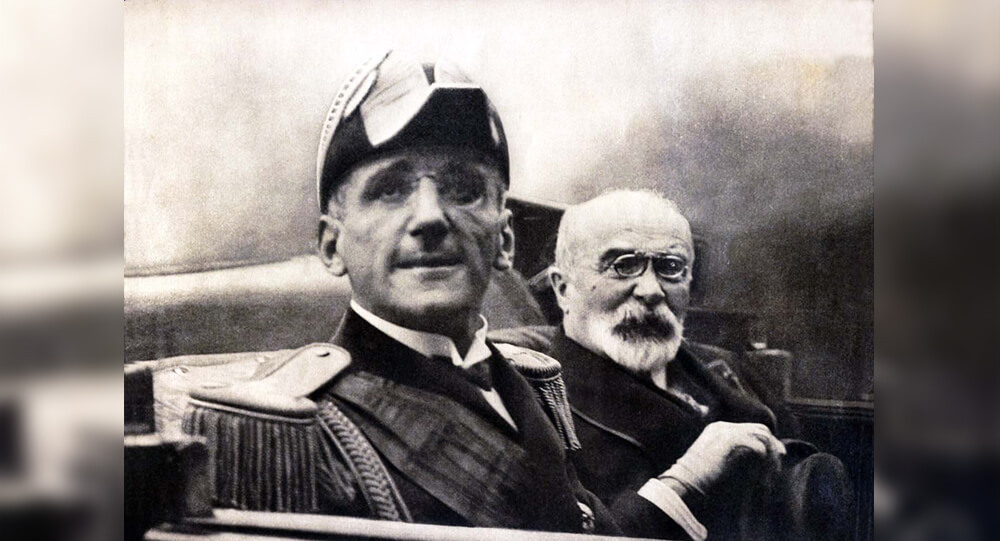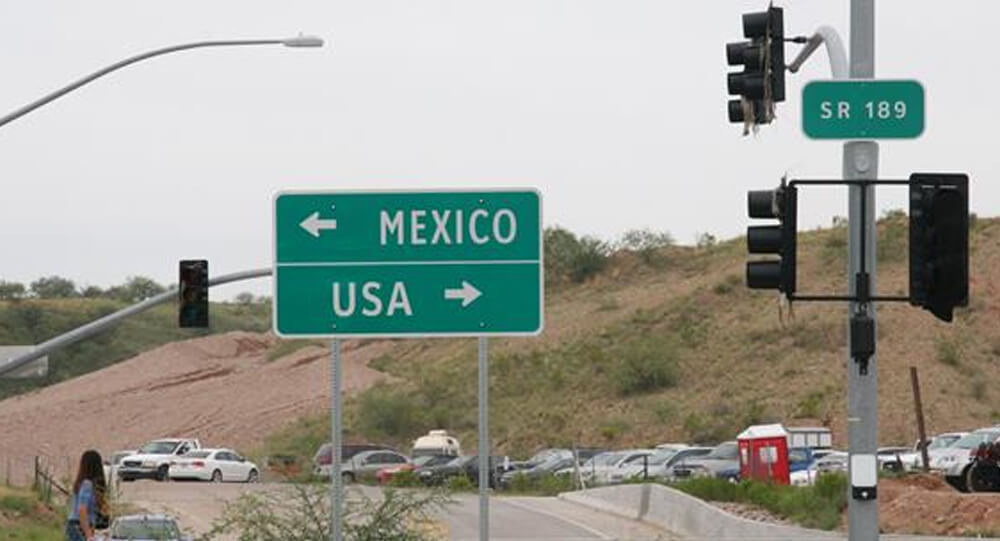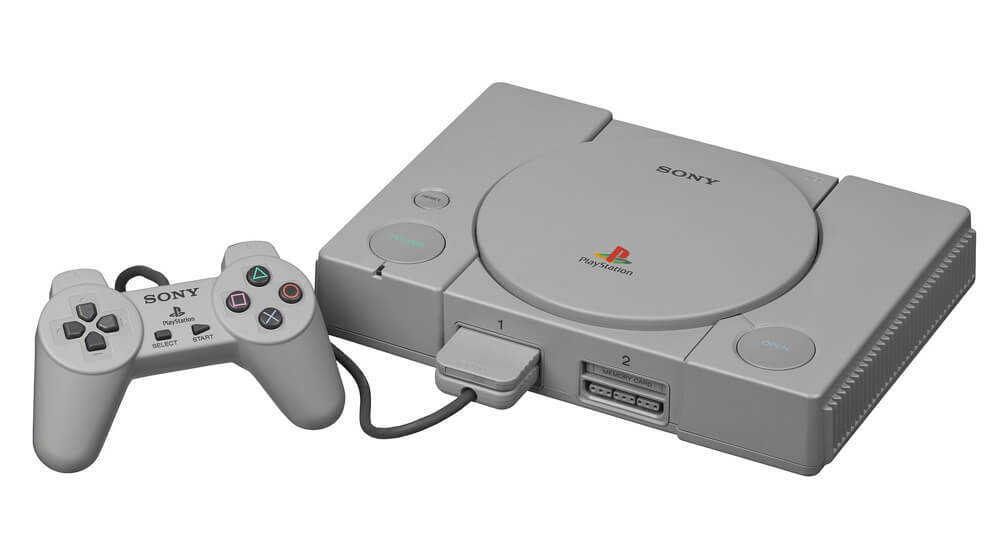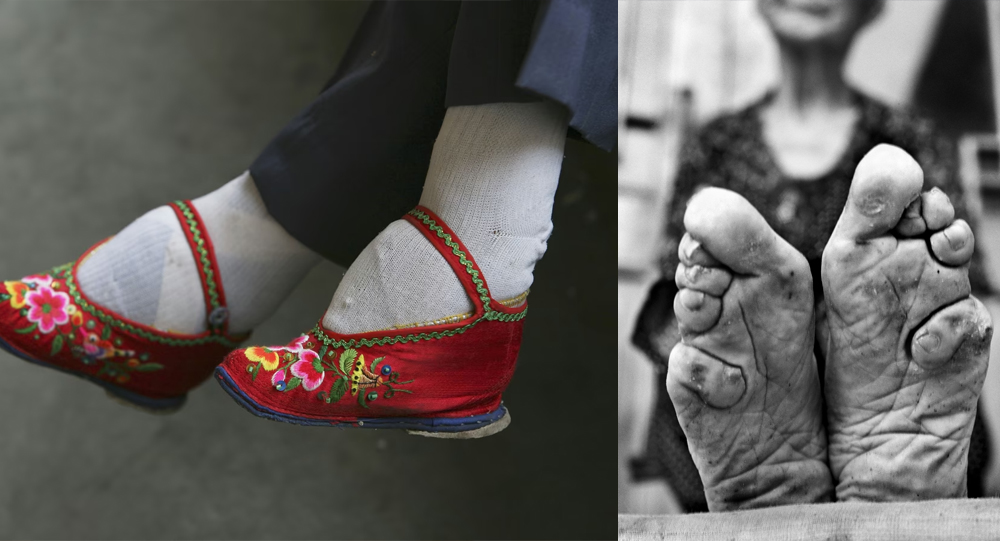

Inside China’s Footbinding Tradition: The Painful Ritual of Lotus Shoes and Bound Feet
In a practice that endured for nearly a millennium, Chinese women’s feet were tightly bound as children to keep them unnaturally small—a procedure now known as footbinding. This painful custom resulted in what became known as “lotus feet,” named after the distinctive tiny size and shape of the altered foot. To fit these feet, delicate and beautifully embroidered “lotus shoes” were crafted, becoming a symbol of feminine beauty and social status in traditional Chinese society. But behind the ornate shoes lies a story of immense physical suffering and intricate cultural meaning.
The Origins and Spread of Footbinding
Footbinding likely began during China’s Tang dynasty (7th–10th century CE) and reached widespread popularity during the Song dynasty (960–1279 CE). According to folklore, the practice was inspired by a court dancer named Yao Niang, who folded her feet into the shape of a crescent moon to dance elegantly—sparking a trend among aristocratic women to emulate the small, delicate feet she displayed.
Originally a signifier of elite status, footbinding gradually spread beyond the upper classes. By the Qing dynasty (1644–1912), nearly 40–50% of Chinese women had bound feet, with almost 100% of upper-class Han women practicing it. The practice served multiple purposes: it was a clear marker of social distinction, a prerequisite for marriage prospects, and a physical embodiment of cultural and ethnic identity. Footbinding was one of the clearest distinctions between the Han Chinese and ethnic minorities, many of whom did not practice the custom.
The Process: How Lotus Feet Were Created
Girls between the ages of four and eight—when bones are still flexible—underwent footbinding. The process began with washing the feet and trimming the toenails. Then, all toes except the big toe were tightly bent under the sole, breaking the bones in the foot to create a pronounced arch. Long strips of cloth, often linen or silk, were wrapped extremely tightly around the feet to hold them in this unnatural position.
After a month, bindings were removed to care for ulcerations and allow healing, then reapplied regularly. This cycle went on for years, forcing feet to remain extremely small—usually between 3 to 4 inches long—known as jinlian, or “golden lotus” feet, which were considered incredibly attractive. The painful, slow process often caused infections, lifelong disabilities, and even deformities severe enough to significantly limit mobility.
Despite the suffering, women continued to bind and rebind their feet throughout adolescence and adulthood. They wore tiny, exquisitely embroidered lotus shoes specially sewn to fit the altered shape. These shoes were not only practical but also status symbols, often elaborately decorated with silk, embroidery, and intricate designs, highlighting the family’s wealth and refinement.
Cultural Significance and Social Pressure
Footbinding was far more than an aesthetic preference. It was embedded deeply in Confucian ideals of female virtue, obedience, and modesty. Small feet were equated with moral purity and femininity, while bound feet served as a physical reminder of a woman’s submission and her role within a patrilineal, patriarchal society.
The practice also created a shared bond between mothers, daughters, and grandmothers, passed down as a rite of passage. In many families, failure to bind feet was seen as risking a daughter’s marital prospects, creating intense social pressure to conform. Women with lotus feet were viewed as desirable wives and seen as “accomplished” for their endurance of pain.
Ironically, some argued that footbinding enhanced fertility and sexual pleasure through supposed better blood circulation to the lower body, though these beliefs lack medical basis.
The Decline and End of Footbinding
By the late 19th century, footbinding came under severe criticism from Christian missionaries, Chinese reformers, and international observers who condemned it as cruel and barbaric. Governments made several failed attempts to ban the custom—such as the Kangxi Emperor’s ban in 1662, which was rescinded due to persistent popularity.
After the Nationalist Revolution in 1911, footbinding was outlawed, but it persisted in rural and remote areas for decades. It wasn’t until the establishment of the People’s Republic of China in 1949 that the practice was effectively eradicated through government campaigns and modernization efforts.
Today, only a handful of elderly women with bound feet remain, and the lotus shoes survive primarily as cultural artifacts and tragic reminders of a painful past.
Trivia: Fascinating Facts About Footbinding and Lotus Shoes
- Footbinding could result in permanent disabilities, sometimes even amputations due to infections.
- Bound feet were often an erotic fascination, symbolizing idealized femininity and grace in literature and art.
- Some ethnic minority groups in China intentionally did not adopt footbinding, using the practice as an ethnic identity marker for the Han Chinese.
- Lotus shoes varied by social class—from simple cotton slippers in rural areas to ornate silk and embroidered shoes in noble families.
- The phrase “golden lotus” (jinlian) refers both to the lotus flower, symbolizing purity, and the coveted tiny feet themselves.
Final Thoughts: Remembering a Complex Tradition
Footbinding and the iconic lotus shoes serve as a window into China’s rich cultural history—a practice reflecting complex intersections of beauty, power, gender roles, and social status. It is a reminder of the physical and emotional costs paid to meet ideals that shaped the lives of millions of women for centuries.
As we look back on this tradition, it encourages reflection on cultural evolution, human resilience, and the importance of challenging harmful customs. The story of lotus feet is both haunting and fascinating—an emblem of beauty and pain forever etched into history.
For those interested in culture and history, the tale of Chinese footbinding remains one of the most striking examples of how customs can both bind and define a society.

How Greek prime minister in 1830’s tried to spread the potato in Greece
A Greek prime minister in 1830’s tried to spread the potato in Greece but people weren’t interested so he put armed guards in front of shipments of potatoes so people would think they were important. People later started stealing these potatoes a lot which spread the crop to all of Greece.

Before Radar: How Giant Acoustic Mirrors Detected Enemy Aircraft in WWI and WWII
Long before radar revolutionized air defense, enormous acoustic mirrors and specialized sound locators stood as the first line of defense against enemy aircraft. Designed as giant “ears,” these structures amplified distant engine noises, allowing operators to detect incoming planes by sound alone. Dive into the intriguing world of these pioneering listening devices, their operation, limitations, and enduring legacy in military history.

Archaeologists Uncover 2,000-Year-Old Amazonian Cities Using Lidar Technology
Deep in the Ecuadorian Amazon, archaeologists have uncovered an ancient network of urban settlements once inhabited by the Upano people about 2,000 years ago. Using cutting-edge lidar technology, these discoveries reveal a highly organized society featuring sophisticated agricultural systems, drainage canals, and extensive road networks. This transformative find challenges long-held assumptions about ancient Amazonian societies and sheds light on a complex civilization thriving in one of the world’s most biodiverse regions.

The Bizarre (And Magical) Duel Between Chung Ling Soo And Ching Ling Foo
Ching Ling Foo and Chung Ling Soo were two magicians from the early 20th century who were bitter rivals. While Ching Ling Foo was genuinely Chinese, Chung Ling Soo was actually a New Yorker named William Robinson.

The Arabia Steamboat: Unearthing a 19th Century Time Capsule from the Missouri River
The Arabia was a steamboat that sank in the Missouri River in 1856. Over time, the river shifted 800 meters to the east, eventually turning the site of the sinking into a field. The steamboat remained under 45 feet of slit and topsoil until 1988, when it was excavated. The mud, as it turned out, was such a great preserver that most of the artifacts on board were found to be intact. They even found jars of preserved apples that were still edible!

Graves holding hands over wall, A Catholic woman and her Protestant husband grave
A protestant man and a Catholic woman who weren't allowed from being buried together in a graveyard in 19th-century Holland turned their graves into a monument showing them holding hands across the wall separating them.

The Assassination Of King Alexander
The assassination of King Alexander of Yugoslavia marked a pivotal moment in the country's history. This article delves into the rise and reign of King Alexander, exploring his early life and ascension to the throne. It also examines the political and social climate in interwar Yugoslavia, setting the stage for the tensions and challenges that ultimately culminated in his tragic assassination. By understanding the context in which this event unfolded, we can better grasp the significance and impact it had on the nation and its future.

how Ferris wheel invented
In 1891, Chicago challenged engineers to create a structure to surpass the Eiffel Tower for the World's Columbian Exposition. George Washington Gale Ferris jr. responded with the original Ferris Wheel, a giant rotating structure elevating visitors above the city. This invention became an iconic attraction at the fair.

How Cleveland's Balloonfest in 1986 Turned Into a Public Tragedy
In Cleveland, Ohio, United Way broke the world record by deflating nearly 1.5 million balloons as part of a publicity stunt to raise money. The balloon obstructed a US Coast Guard search for two boaters who were subsequently discovered to have drowned, blocked airport runways, and blocked land and waterways.

1972 Andes Plane Crash Survivor recall the terrifying Struggles to Stay Alive
On October 13, 1972, a plane carrying a rugby team from Uruguay crashed in the Andes between Chile and Argentina. The survivors were in brutal conditions - high altitude, bitter cold, and the lack of food—and faced the most terrible choice—eating the frozen flesh of their dead friends or starving to death themselves.

story of the youngest mother in the world at age of five - Lina Medina
Lina Medina, a five-year-old Peruvian girl, became the youngest mother in history in 1939 when she gave birth to a boy.

Underground Railroad to Mexico freed thousands of slaves in 1829
Slavery was abolished in Mexico in 1829. Slaves were escaping to Mexico, and slaveholders in the US were aware of this. The US attempted to get Mexico to sign a fugitive slave treaty, which would have required Mexico to send back escaped slaves to the US. But, Mexico refused, arguing that slaves were free as soon as they set foot on Mexican soil.

A Brief History of the PlayStation Gaming Console
Sony's PlayStation was never meant to be an actual product. Instead, it was intended to be a CD-ROM console that would support Nintendo games. However, when Nintendo backed out of the deal at the last minute, Sony went ahead and launched what soon became one of the most successful gaming consoles of all time.

The Amazing Truth About The German U-Boat That Was Sunk By A Toilet
During WWII, a German captain and an engineer flushed the submarine's high-tech toilet incorrectly, causing the vessel to rapidly fill with water. British planes patrolling the sea attacked them as the submarine was brought to the surface. While many members of the crew were killed in the attack, the captain escaped!

Nordlingen, The Town Inside A Meteorite Crater With Millions Of Meteorite Diamonds
The German town of Nördlingen is embedded with 72,000 tons of microscopic diamonds. About 15 million years ago, a meteorite hit this region, and the impact created a massive depression and formed rocks containing diamonds, glass, and crystals. The town was built in the impact crater sometime around 898 CE.

What Was the Beast of Gévaudan?
Between 1764 and 1767, a mysterious animal called the Beast of Gévaudan terrorized the French village called Gévaudan. It attacked and killed about 100 adults and children. While most believe it was a wolf, some say it may have been a wolf-dog hybrid, hyena or even a lion, but without any genetic evidence, the beast will remain a mystery forever.

Louis Le Prince Invented the motion picture camera, and then he mysteriously disappeared
Louis Le Prince, the inventor of motion pictures, vanished without a trace in 1890. Thomas Edison quickly claimed the title of "first and sole inventor of cinema," even taking Le Prince's son to court to dispute it. A few years later, the son also dies under mysterious circumstances.

Philippines, the largest supplier of Nurses in the World
Philippines is the world’s largest supplier of nurses, supplying roughly 25% of all overseas nurses worldwide.

Blanche Monnier: Imprisoned For 25 Years For Falling in Love
Blanche Monnier, she was a French woman noted for her beauty, she wished to marry an old lawyer that her mother disapproved of, so she locked her in a small dark room in her attic for 25 years.

Irena Sendler: woman who rescued Jews during holocaust
Irene Sendler was the Zegota resistance group's head of the children's department. She risked her life to smuggle children out of the Warsaw ghetto, place them with Polish families or orphanages, give each child a new identity, and keep records so that they could be returned to their families. In 1943, the Gestapo arrested and sentenced her to death, but she was rescued by Zegota.

The worst blizzard in recorded history: the 1972 Iran blizzard
The deadliest snowstorm ever recorded occurred in Iran in 1972. It lasted for a week, burying areas in 26 feet of snow and killing over 4,000 people, including the entire populations of three villages.

Nicholas Winton ‘British Schindler’: Man who rescued 669 Czech children from Nazis
A man named Nicholas Winton saved 669 kids during WWII and lived almost all his life without letting people know.

Story of Kathrine Switzer: the first woman to run in Boston Marathon
Before women were allowed to run in the Boston Marathon, Kathrine Switzer participated. A race official attempted to forcefully remove her from the race in 1967, but her boyfriend pushed him down. She was the first female finisher who had a numbered entry in the race.

Xin Zhui And The Story Of The Stunningly Intact Lady Dai Mummy
A 2,000-year-old mummy of a Chinese woman, Xin Zhui, also known as “Lady Dai,” was preserved in 21 gallons of an “unknown liquid.” With her original hair, organs, eyebrows, and eyelashes intact, the mummy still has blood in her veins. Her skin and ligaments are soft and as flexible as that of a living person.

D.B. Cooper: Man who hijacked a plane and jumped out with a $200,000
On November 22, 1971, DB Cooper hijacked a Boeing 727, drank a whisky, smoked a fag, and then jumped out of the plane with $200,000. He was never again seen.

